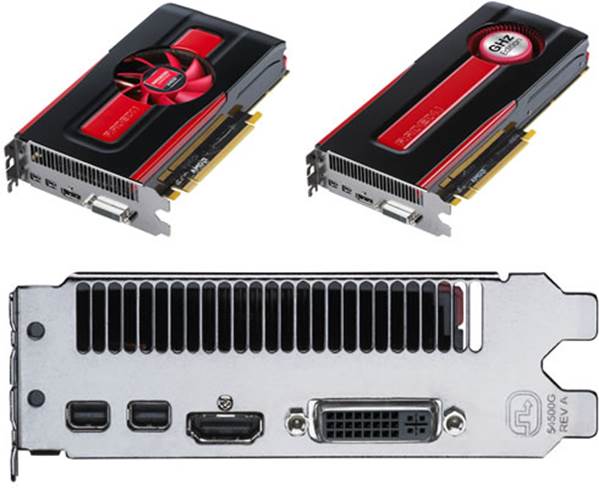AMD’s mid-range card in this test, the
Radeon HD 7850, shares its Pitcairn architecture with the chart-topping HD
7870, even though it costs around $63 less than its bigger brother.

AMD
Radeon HD 7850
It may be the same architecture, but AMD
has cut back in order to create the Radeon HD 7850. There’s no
headline-grabbing clock speed of 1,000MHz, for instance -with the core here
clocked at a more modest 860MHz - and the number of stream processors has
reduced from 1,280 to 1,024. The number of Graphics Processing Clusters has
also been slimmed down: the more expensive card has 20, but this model has just
16.
In other areas, there are similarities: the
2GB of GDDR5 memory is still clocked at 1,200MHz and is still processed by a
256-bit bus, and there are still 2.8 billion transistors on the card’s 212mm2
die, manufactured using a 28nm process.
This card also benefits from AMD’s recent
'Never Settle' driver update and, in our benchmarks, it put paid to the GeForce
GTX 650 Ti - Nvidia’s closest competition here, though it's a card that clocks
in at about $47 cheaper.
In the 1,920 x 1,280 Very High-quality
Crysis test the AMD card averaged 48fps, eight frames more than the Nvidia
card, and in Just Cause 2 the AMD card’s avantage was extended to twelve
frames. The HD 7850 proved more capable in our theoretical tests, too. The
Radeon’s 67.3fps score in the Unigine Heaven benchmark easily bested the
55.4fps score from the GTX 650 Ti, and there was plenty of distance between the
cards in the 3Dmark 11: the HD 7850 scored 7,715, 7,380 and 7,574 in the
performance, graphics and combined tests, with the Nvidia bringing up the rear
with scores of 5,343, 5,072 and 4,094.

The
HD 7850 is a less demanding chip when it comes to power, and that means it could
be suitable for less demanding computers
AMD has more raw power in its GPU, and the
Nvidia card was only able to claw back some ground in a couple of our games
tests. In Crysis 2 the HD 7850 scored 47fps, with the Nvidia card only four
frames behind, and both chips scored 69fps in the DiRT 3 benchmark.
There was little to choose between the
cards in our thermal benchmarks, though. The HD 7850’s idle and peak power
draws of 60W and 191W compared well to the Nvidia card’s 62W and 186W
requirements. The AMD card’s top temperature of 72°C is two degrees less than
the comparable Nvidia reached.
The HD 7850 is a less demanding chip when
it comes to power, and that means it could be suitable for less demanding
computers: it needs just one six-pin power plug rather than the two needed by
the HD 7870, which could be handy. It’s a smaller card, too - the 196mm PCB is
much shorter than the 245mm of the HD 7870.
There’s plenty to like here, then, but the
price could be a sticking point. The HD 7850 costs around $240, which -as we
mentioned earlier – is something like $47 more than you’ll be paying for a
GeForce GTX 650 Ti. While the AMD card is faster, both chips will easily cope
with the demands of 1080p gaming, so it’s a buying decision where price is
vital and we can only really recommend the HD 7850 if you’re craving a little
extra horsepower and have the extra money to burn.
|
Details
·
Price: $240
·
Website: www.amd.com
Verdict
·
Quality: 8/10
·
Value: 6/10
·
Overall: 7/10
|